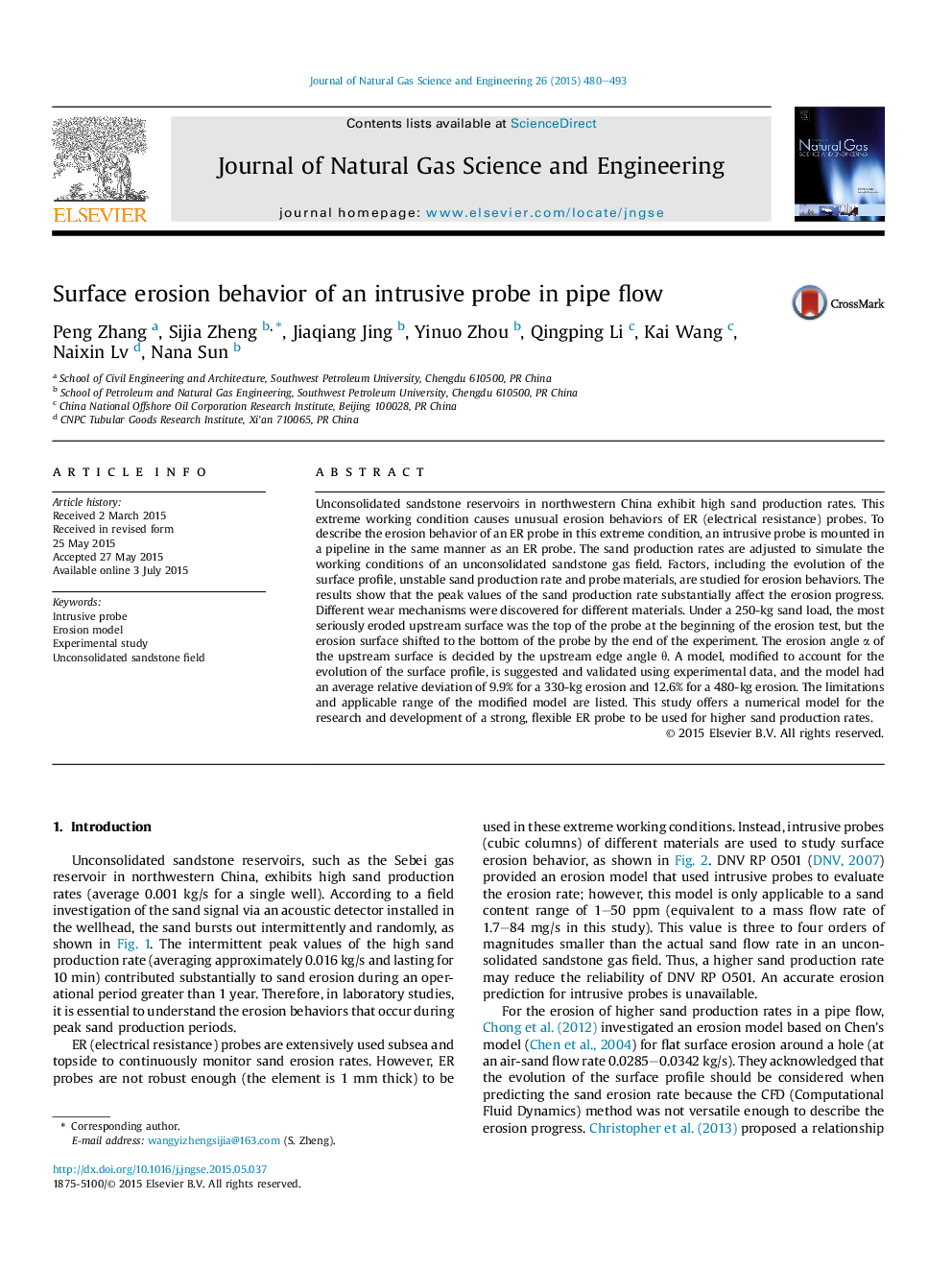| Article ID | Journal | Published Year | Pages | File Type |
|---|---|---|---|---|
| 1757539 | Journal of Natural Gas Science and Engineering | 2015 | 14 Pages |
•An adjustable sand production rig is built to simulate field working conditions.•Erosion mechanisms of three materials are found under high sand production rate.•A CFD method is applied to predict and explain the erosion progress.•Evolution of surface profile is studied and incorporated in the modified model.•A modified erosion model is proved to be more reliable for intrusive probe.
Unconsolidated sandstone reservoirs in northwestern China exhibit high sand production rates. This extreme working condition causes unusual erosion behaviors of ER (electrical resistance) probes. To describe the erosion behavior of an ER probe in this extreme condition, an intrusive probe is mounted in a pipeline in the same manner as an ER probe. The sand production rates are adjusted to simulate the working conditions of an unconsolidated sandstone gas field. Factors, including the evolution of the surface profile, unstable sand production rate and probe materials, are studied for erosion behaviors. The results show that the peak values of the sand production rate substantially affect the erosion progress. Different wear mechanisms were discovered for different materials. Under a 250-kg sand load, the most seriously eroded upstream surface was the top of the probe at the beginning of the erosion test, but the erosion surface shifted to the bottom of the probe by the end of the experiment. The erosion angle α of the upstream surface is decided by the upstream edge angle θ. A model, modified to account for the evolution of the surface profile, is suggested and validated using experimental data, and the model had an average relative deviation of 9.9% for a 330-kg erosion and 12.6% for a 480-kg erosion. The limitations and applicable range of the modified model are listed. This study offers a numerical model for the research and development of a strong, flexible ER probe to be used for higher sand production rates.
